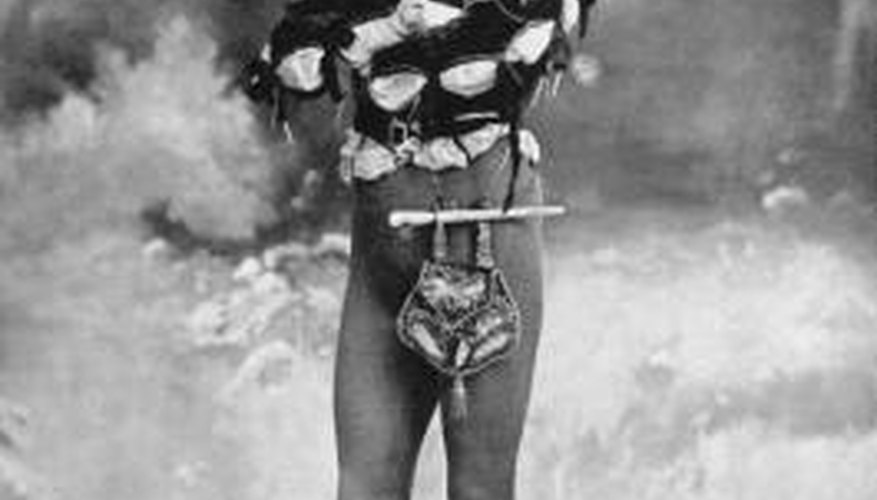Part of the magic of the stage is that of the quick costume change. In seconds, a performer is changed from one character to another or presented in a new flashy costume to change the visual tone of the moment. Creating your own costumes for quick changes is a matter of choosing pieces that are naturally suited to quick change, as well as altering existing garments.
- Part of the magic of the stage is that of the quick costume change.
- Creating your own costumes for quick changes is a matter of choosing pieces that are naturally suited to quick change, as well as altering existing garments.
Determine how many dressing assistants, if any, you'll have; so that you can take advantage of their help in the designs.
Start with garments that are easy to change quickly. Choose loosefitting clothes, clothes with elastic waists, and clothing that can wrap around. Good garment choices include large skirts, capes, coats, overalls, and accessories like scarves, sashes and hats.
Plan costumes in layers. Remember that the quickest and easiest fast changes are those you can achieve by simply removing one layer to expose another costume worn underneath.
Replace all closures with Velcro™ or metal snaps. Use Velcro for costumes that need to be put on quickly, but avoid it if you need to do a quick removal, and need to keep the change silent. Use metal snaps for closures that need to be less bulky, such as cuff buttons, or for quiet removals.
- Remember that the quickest and easiest fast changes are those you can achieve by simply removing one layer to expose another costume worn underneath.
- Use metal snaps for closures that need to be less bulky, such as cuff buttons, or for quiet removals.
Alter garments so that they wrap around the person ,and don't need to be pulled up and around. Do this alteration especially on trousers and pullover shirts; with trousers, split them up the outside seams, rehem, and fit with Velcro or snaps. With shirts, do the same with closures up the sides. These techniques allow for a quick change with the help of dressing assistants positioned on either side of someone.
Use versatile base elements that you can re-dress for the sake of creating a dramatically different look. Good elements include leotards, which can be topped with baggy shirts or jackets, plain undershirts for men and women, and trousers and skirts of solid colour, especially black.
Design some garments for fast removal, rather than fast dressing, if they only need to be taken off quickly. Items with complex systems of lace and hook closures make for a dramatic change because they create the impression of a difficult change, yet they are relatively quick to remove.
